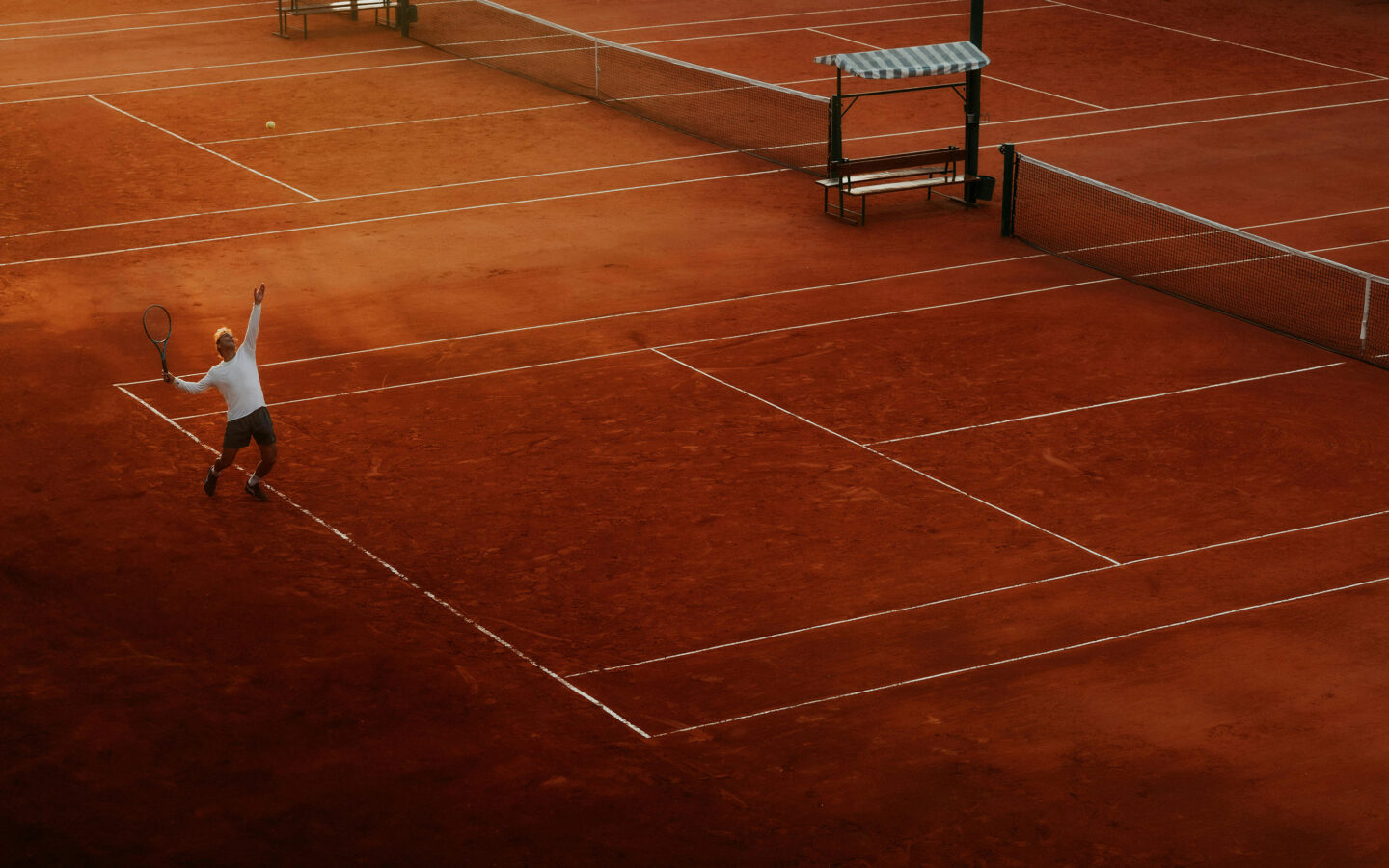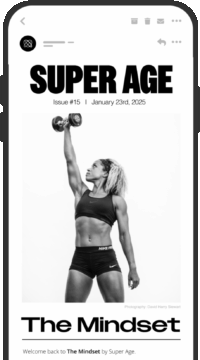Train Your Attention Like a Champion Athlete
Gera Cejas
A 2025 review finds that [mahynd-fuhl-nis]nounThe practice of paying attention to the present moment with non-judgmental awareness.Learn More and acceptance training can sharpen focus, reduce anxiety, and strengthen mental [ri-zil-yuhns]nounThe ability to recover quickly from stress or setbacks.Learn More, if you know how to train it.
Mindfulness has long been the secret weapon of elite athletes, from the American Olympic canoeing team in the 1980s to modern-day champions who swear by [breth-wurk]nounIntentional breathing exercises that reduce stress and improve focus.Learn More and body scanning before competition. The science, however, has been a mixed bag.
A new umbrella review in the Journal of Exercise Science & Fitness pulls together data from 15 systematic reviews covering more than 10,000 athletes. It found that mindfulness-based interventions (MBIs), structured programs like Mindfulness-Based Stress Reduction (MBSR), the Mindfulness–Acceptance–Commitment (MAC) protocol, and sport-specific meditation practices, are consistently linked to better focus, lower competitive anxiety, and improved decision-making under pressure.
The caveat? Most of the research is still methodologically weak. Seventy-three percent of the systematic reviews analyzed were rated “critically low” in quality using the AMSTAR-2 framework, meaning the evidence is promising, but far from conclusive. Still, when we look beyond the statistics and into the how of mindfulness, a practical takeaway emerges: athletes who learn to stay aware, not attached, perform better.
The Problem with “Trying Harder”
“Wim Hof told me: ‘Let the body do what the body can do,’” says Super Age Founder David Harry Stewart. Traditional psychological skills training (PST), visualization, positive self-talk, goal-setting, has been the go-to for decades. But as this review notes, PST can sometimes backfire. Overthinking during performance can overload cognitive resources (a phenomenon called reinvestment), leading to what psychologists call paralysis by analysis. “Thinking is the enemy of flow,” says Stewart.
Mindfulness flips the script. Instead of controlling thoughts, it trains athletes to observe them without interference. That shift builds what researchers call psychological flexibility, the ability to stay present and act effectively, even under stress.
This is why it works:
- You notice distractions without chasing them.
- You feel pressure without fighting it.
- You return to the task, again and again, with clarity and composure.
Focus, Flow, and Emotional Regulation
Across the reviews, MBIs showed moderate-to-large effects on focus, flow, and emotional regulation, the internal skills that often predict external success. Two reviews highlighted gains in running speed, agility and reaction time, while one noted faster recovery and return-to-play among rehabilitating athletes. Enhanced flow states, reduced competition anxiety, and lower [burn-out]nounPhysical or emotional exhaustion from chronic stress.Learn More were also reported as potential performance boosters.
A 2018 study suggests MBIs foster self-awareness, reduce automatic responses, and bolster concentration during performance. One review found that athletes engaging in MBIs enhanced [self reg-yuh-lay-shun]nounThe ability to manage emotions and actions consciously.Learn More and emotional stability, supporting better decision-making under pressure.
Most trials relied on self-reported data, small sample sizes, and varying definitions of “performance.” In other words, the science still leans more psychological than physiological. But that doesn’t make it irrelevant. It just means that mindfulness isn’t a hack: it’s a skill. One that strengthens the systems that underlie consistent, repeatable excellence.
Training Mindset Like You Train a Muscle
The evidence suggests that structure matters. The most effective MBIs used guided, multi-week programs combining breath awareness, body scanning, and acceptance training. Here’s what the research implies works best:
- Make it sport-specific
Translate mindfulness into the rhythms of your sport. For runners, that could mean focusing on breath or foot strike. For golfers, noticing pre-shot tension. The cue is less “relax” and more “notice.” - Pair awareness with acceptance
The MAC approach merges mindfulness with commitment training. It teaches athletes to stay focused on values and goals even when discomfort arises, a powerful antidote to perfectionism and performance anxiety. - Go beyond sitting practice
Mindfulness isn’t limited to meditation cushions. Warm-ups, recovery sessions, and even post-game debriefs can become mindful rituals that train presence under pressure. - Think long-term
Studies lasting at least seven to eight weeks showed stronger reductions in stress and anxiety than shorter interventions. Like muscle, attention grows with consistent training.
The Mindfulness–Acceptance–Commitment (MAC) Protocol
Developed by sport psychologists Frank Gardner and Zella Moore, the MAC protocol integrates mindfulness and acceptance practices with performance psychology. Unlike traditional psychological skills training, which focuses on controlling thoughts or emotions, MAC teaches athletes to accept internal experiences, like nerves, fatigue, or doubt, so attention stays on what matters: effective action in the present moment.
The Science of MAC
- Rooted in: Acceptance and Commitment Therapy (ACT) and performance psychology
- Goal: Increase psychological flexibility, the ability to stay focused and act on values despite discomfort
- Core mechanisms: Nonjudgmental awareness, acceptance, and committed action
Validated outcomes: Improved focus, flow, and emotion regulation; lower competitive anxiety and burnout; better performance consistency
What it looks like:
Instead of trying to calm down, athletes learn to open up to what’s present, using awareness as an anchor:
- A golfer feels nerves before a putt. Instead of fighting anxiety, they notice it (“tight chest, racing heart”) and refocus on breath and routine.
- A runner in pain at mile 18 accepts discomfort as part of the process and recommits to their pacing plan.
These micro-skills retrain the nervous system to respond, not react.
Try This Mini MAC Practice: “Notice, Allow, Act”
To help you perform with clarity and composure by noticing what’s present, allowing it to be there, and acting from what matters most.
When to use: Before a workout, presentation, performance, or anytime stress rises.
1. Notice (Mindfulness)
- Take a slow breath in through your nose and out through your mouth.
- Shift your attention inward. What’s here right now: in body, mind, emotion?
- You might notice tension in your shoulders, racing thoughts, or excitement.
- Simply name it silently: “Tight chest.” “Buzzing energy.” “Thinking about the outcome.”
- You’re not fixing anything. You’re tuning in.
- Cue: “I’m aware of what’s here.”
2. Allow (Acceptance)
- Instead of pushing discomfort away, give it space.
- If a feeling or thought feels loud, acknowledge it and let it sit beside you.
- Tell yourself: “It’s okay for this to be here. I don’t have to make it go away to perform well.”
- Breathe. Let the edges of resistance soften. This step builds emotional range — the ability to stay steady while everything moves.
3. Act (Commitment)
- Now recall what matters most in this moment: your value.
- What quality do you want to embody right now? Calm? Focus? Courage? Precision?
- Breathe that word in.
- As you exhale, commit to one small, clear action aligned with it. For example: “I’ll start the meeting with presence.” or “I’ll run the next interval with focus, not force.”
- Anchor your attention to the next action, not the noise.
Repeat this cycle anytime pressure rises. With practice, it becomes a mental muscle, one that turns nerves into awareness and distraction into direction.
Read This Next
The information provided in this article is for educational and informational purposes only and is not intended as health, medical, or financial advice. Do not use this information to diagnose or treat any health condition. Always consult a qualified healthcare provider regarding any questions you may have about a medical condition or health objectives. Read our disclaimers.

